A couple in Japan receive a ton of coffee grounds a month for the wonderful use of agricultural fertilizer to turn waste into treasure.
Surfing the Internet, I suddenly saw a piece of news [A couple in Kyoto collected coffee grounds by bike and collected 1 ton a month! Go in decisively to see if it is exaggerated or true.
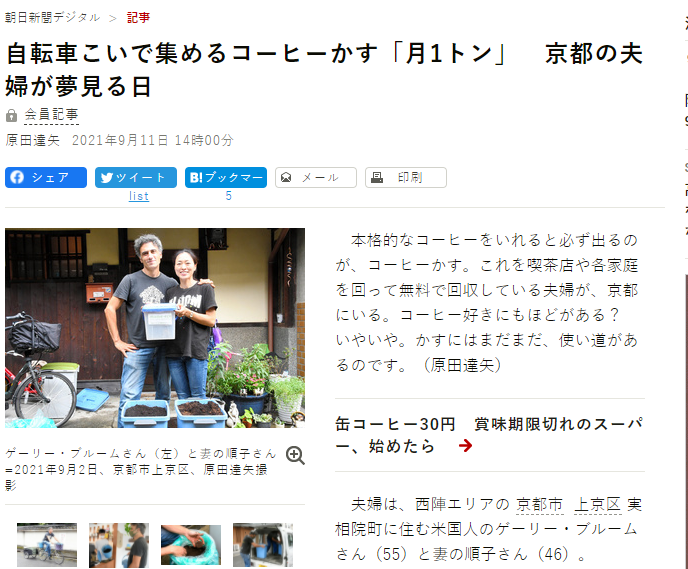
Can't you read Japanese? It doesn't matter. I'll translate for you online.
The thing is, a couple living in the Shangjing district of Kyoto (Gary Bloom, 55, an American, and Junko, 46, a Japanese woman) go to a familiar coffee shop in the city at 06:30 every morning to collect coffee grounds and reuse the coffee as fertilizer.
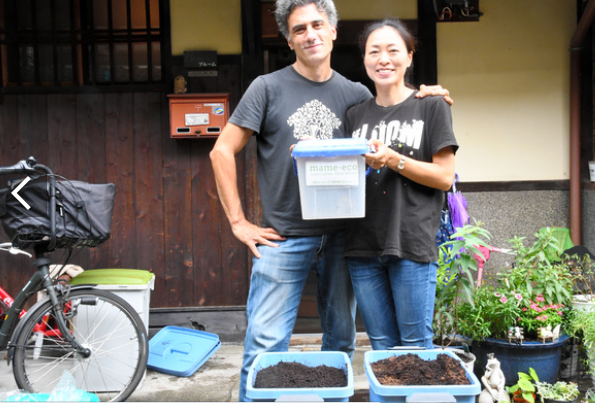
Gary Bloom (left) Junko (right)
Why would they do that?
Gary, who was interested in environmental issues at first, found that coffee lovers produce at least six cups of coffee grounds a day. In order to reduce the garbage at home, I simply inquired about the recycling of coffee grounds on the Internet, and unexpectedly found that coffee grounds could be used as agricultural fertilizer.
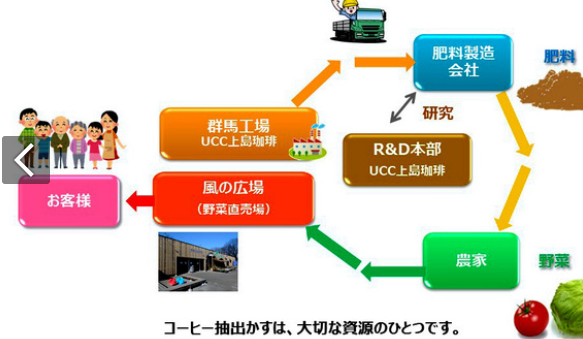
They want more people to know that throwing away coffee grounds is actually a waste, so they set up a Kyoto coffee grounds recycling project called "mame-eco" in May 2020. By mid-September 2021, 10 metric tons (10000 kg) of used coffee grounds, husks and filter paper had been collected and distributed.
At present, the project is working with about 50 coffee shops and hotels in Shangjing District. There are four collection boxes in the city, and it is said that about 1 ton of coffee grounds can be collected in a month.
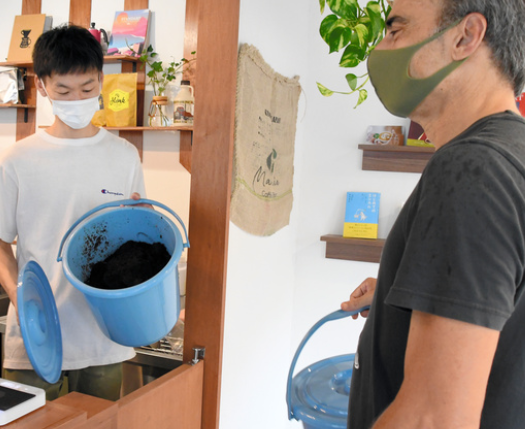
Gary Bloom picked up the coffee grounds at the cafe.
The prince of the city is using these coffee grounds for agriculture. They receive coffee grounds several times a month and sprinkle them around the plants to improve the soil environment and control pests. The person in charge of the farm expressed the hope that the project would spread further.
According to the "Household Survey" of the Statistics Bureau of Japan's Ministry of General Affairs, the average coffee consumption (beans and flour) of households with more than two people in Beijing will be about 3562 grams per year from 2018 to 2020. It ranks among the top in 52 prefectures and government-designated cities (including District 23 of Tokyo), with an average annual coffee consumption of 8583 yen, the highest in Japan.
According to the International Coffee Organization, people around the world consumed more than 166000 bags of coffee (each weighing 60 kilograms [kg]) between 2020 and 2021.
These figures tell us a clear message that the recycling of coffee grounds Brooks no delay.
Use coffee grounds for daily life
Just like Prince Huan Farm uses coffee grounds, many people add coffee grounds to the soil to compost. Coffee grounds can maintain the nitrogen content in the soil, which is beneficial to the growth of plants. But it is worth noting that coffee is a weakly acidic plant, for some plants that do not like acid (tomatoes, blueberries, etc.), caffeine will hinder their growth. Coffee grounds have a strong smell, so you can set up barriers around plants to prevent insects such as slugs and snails from entering.

2. Skin care
Caffeine has the function of accelerating fat metabolism and improving blood circulation, and the fine particles and acid value of coffee grounds can also help exfoliate. We can mix coffee grounds in soap or bath cream instead of scrub cream to massage the skin, can achieve the effect of cleaning pores and exfoliating at the same time.
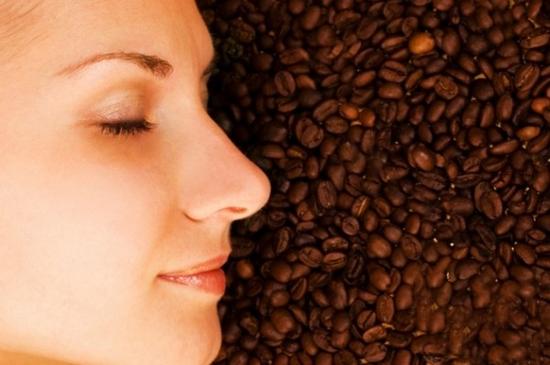
3. Natural meat tenderizer
Coffee contains an enzyme that helps soften meat and enhance its flavor. Many chefs at home and abroad are using this trick to spread coffee grounds and other seasonings on the barbecue to marinate the barbecue.
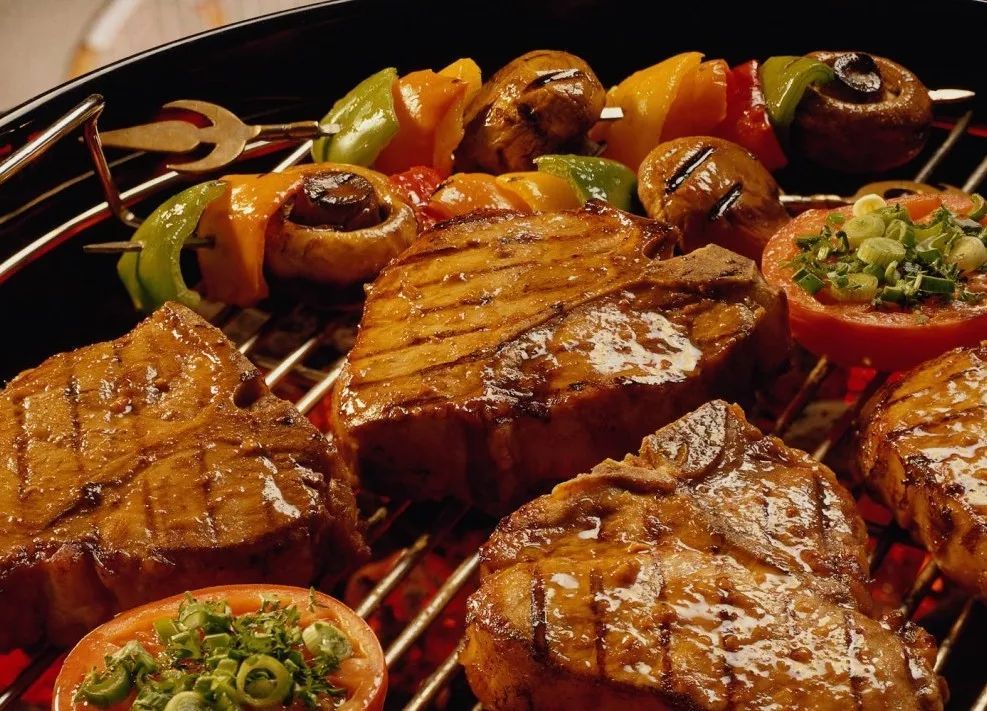
Coffee grounds, like activated carbon, have countless pores that absorb moisture and odors from the air. Put the coffee grounds in the bag and put them casually in the wardrobe, kitchen and bathroom. It can be easily deodorized, moistureproof and moistureproof.
Warm reminder: coffee grounds should be dried first.
Just finished coffee grounds with high moisture content, do not use for a long time, wet coffee grounds are very easy to deteriorate and stink, and even mildew. In addition, coffee grounds have many effects that need to be in a dry state to work.
Coffee grounds transformed into environmentally friendly materials
1. Coffee grounds cups, straws, use coffee grounds instead of plastic, and implement the principle of coffee inside and outside.
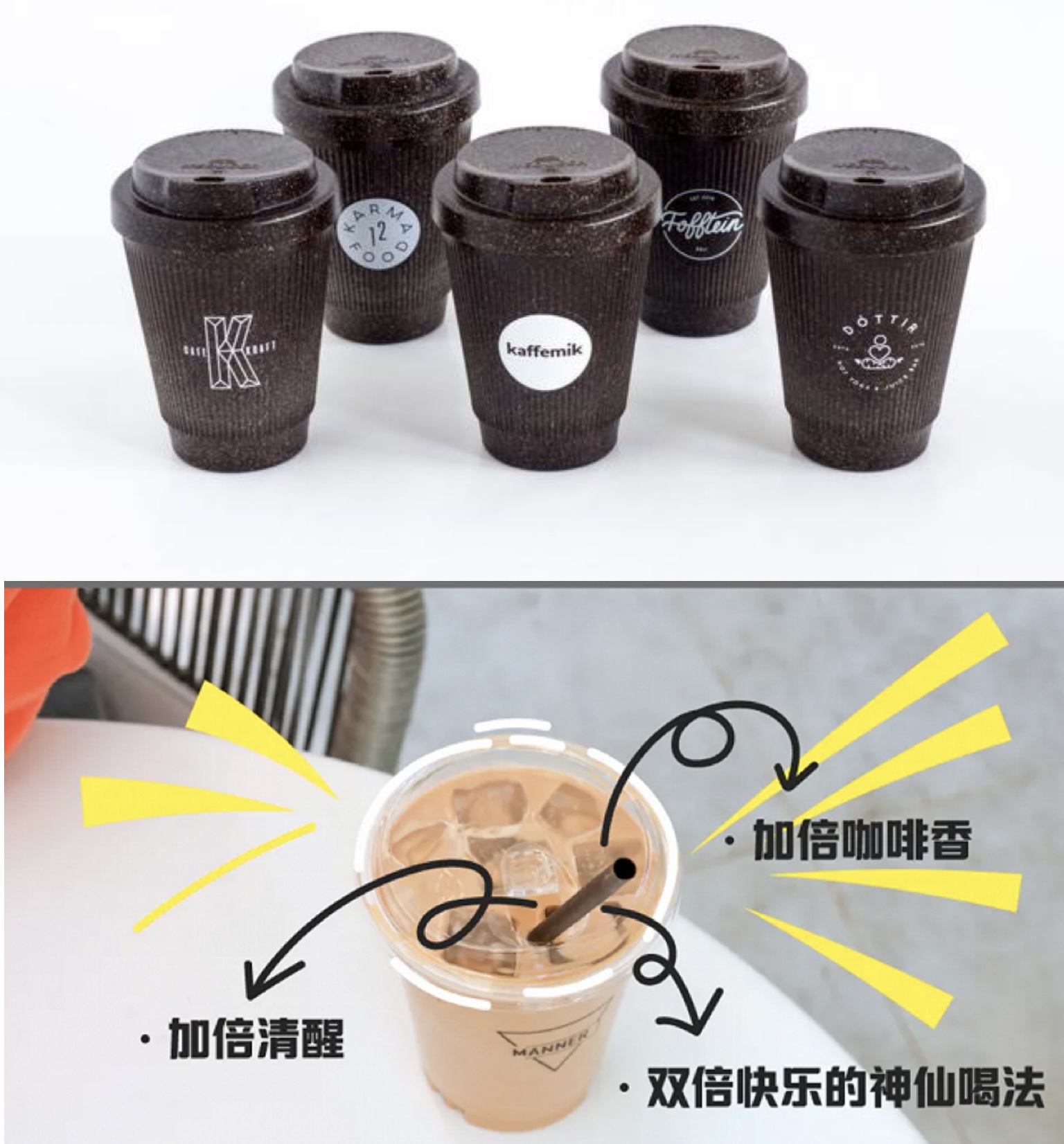
2. Coffee can also make clothes. Oh, what a surprise!
It is said that Fubon will hold a theme day from September 10 to September 12, with the theme of "environmental protection". On September 8, the theme jersey was announced for the first time, which is made of environmentally friendly material. [will be good environmental protection theme jersey] in the design combined with the concept of environmental protection to blue, green, white as the main color system, the use of coffee yarn cloth, precious bottles, coffee grounds and other environmentally friendly materials to manufacture with environmental protection certification.

▲ Fubon general environmental protection jersey. (will be provided by Fubon / Fubon)
How's it going? After seeing so many examples of turning coffee grounds into treasures, are you still willing to throw coffee grounds away?
Photo: Asahi Shimbun Network
Important Notice :
前街咖啡 FrontStreet Coffee has moved to new addredd:
FrontStreet Coffee Address: 315,Donghua East Road,GuangZhou
Tel:020 38364473
- Prev
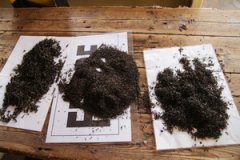
The difference between BOP, BOPF and CTC of Ceylon black tea
1.OP (orangePekoe, Orange Bai Hao) the word OP here has nothing to do with the type of tea or the taste of the tea. Although the word orange is used, the whole phrase has nothing to do with the taste of oranges. It just refers to the size and shape of black tea. What exactly does OP mean? The most common explanation is that
- Next
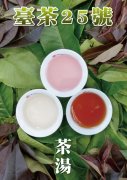
What is purple tea, black tea? A New Variety of Taiwan Black Tea Ziyantai Tea No. 25 Taste Characteristics
Purple tea soup, lemon will change color. The tea is light green with a purplish base, slightly darker in color, and contains 50 times more anthocyanins than the popular Taicha No. 18 red jade. Blood Mother: Burma Big Leaf Seed (Burma) Father: Taiwan Tea No. 13 (Cuiyu) Adaptability: Green Tea, Black Tea Black Tea Water Dark Red, Hawthorn
Related
- A complete list of coffee bean names and their meanings! What is Yejia Shefi coffee? Where is Mantelin coffee?
- What grade does Arida Manor Kaduai coffee beans belong to? What treatment is Arida ASD slow anaerobic sun exposure?
- The milk tea cup becomes smaller?! Overlord Tea Girl launches a new "Return to Yunnan" series
- Accused of selling counterfeit and high-priced coffee beans! Well-known boutique coffee brand "Oukelao" bowed and apologized!
- How to make espresso dumplings? Can I eat coffee and glutinous rice balls together?
- Save the unformed and stagnant powder cakes in one second! What is the problem with stagnant water in the powder bowl of the espresso machine?
- What does hand-brewed coffee stop mean? Why is it not recommended to make coffee by hand?
- Is it normal to smell like coffee? Why does coffee smell like alcohol? What's wrong with the strong smell of cold extract ice dripping ice brewed coffee?
- How to solve the problem that hand-brewed coffee extraction takes too long? Why is the water flowing so slowly when making coffee?
- The main points of making Australian white coffee, the proportion details, how does Australian white properly foam and blend the flowers?

